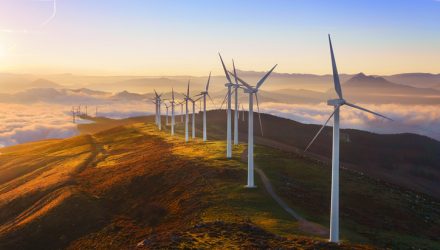The ALPS Clean Energy ETF (ACES) is higher by 8.50% to start 2020 and that gain is no fluke. Rather, it’s supported by a steady stream of favorable fundamental data that bolster the long-term case for renewable energy investment.
ACES follows the CIBC Atlas Clean Energy Index. That benchmark is comprised of U.S. and Canada-based companies that primarily operate in the clean energy sector. Constituents are companies focused on renewables and other clean technologies that enable the evolution of a more sustainable energy sector.
“The electricity generation mix continues to experience a rapid rate of change, with renewables the fastest-growing source of electricity generation through 2050 because of continuing declines in the capital costs for solar and wind that are supported by federal tax credits and higher state-level renewables targets,” said the Energy Information Administration (EIA) in a report released Wednesday. “With slow load growth and increasing electricity production from renewables, U.S. coal-fired and nuclear electricity generation declines; most of the decline occurs by the mid-2020s.”
Diversification Matters
ACES’ components provide the products and services that enable the evolution of a more sustainable energy sector. The green energy companies are engaged in renewable energy sources, including solar power, wind power, hydroelectricity, geothermal energy, biomass, biofuels, and tidal/wave energy; clean technologies, including electric vehicles, energy storage, lithium, fuel cell, LED, smart grid, and energy efficiency technologies; and other emerging clean energy activities and technologies.
Translation: ACES touches many of the most relevant corners of the renewable energy market and that’s a plus for long-term investors. As EIA points out, lower costs are boosting renewables adoption.
“Costs for renewables such as wind and solar have continued to decline as experience is gained with more builds. How long these high cost reduction rates can be sustained is highly uncertain,” said EIA. “The High Renewables Cost case assumes no further cost reduction for renewables, and the Low Renewables Cost case assumes a sustained high rate of cost reduction. The Reference case assumes that cost reduction rates gradually taper off.”
ACES is at the right place at the right time. Not only is clean energy consumption increasing, but costs are also decreasing, which in turn bolsters adoption. Additionally, coal production is slumping, adding to the virtuous cycle for alternative energy ETFs.
For more on disruptive technologies, visit our Disruptive Technology Channel.
The opinions and forecasts expressed herein are solely those of Tom Lydon, and may not actually come to pass. Information on this site should not be used or construed as an offer to sell, a solicitation of an offer to buy, or a recommendation for any product.

